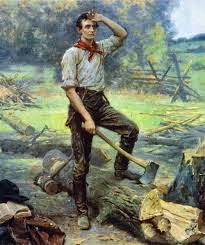My son has a rotating eight day schedule annotated in as many colors. A suggestion is noted in bold on his shopping list: "Please try to have students color-coordinate their class supplies with their class colors (ex. Yellow Binder for Yellow Math class)."
This begs the question of course, just what is Yellow Math and is it different from Blue Math? My son has Red Math so should he be alarmed?
My son and I discussed his schedule hues: royal blue vs. purple and yellow, orange, and tan. Staples ran out of plastic folders and they had 15 cent paper folders in numerous colors, but we didn't find tan. Brown might work and he subbed black for orange. Pink and green were for specials like art and music, and gray was the only color which made sense.
Gray was reserved for whatever: assemblies, workshops, health class. Dubious, changing, the combination of black and white, gray was a color that merited its name. The color scheme is designed to help students remember which class they have and what they need.
 |
| Staples "Better Binder" which starts at $9.99 |
Two boys settled onto desk chairs by Staples' entrance, Sit 'n Spin skills in full force. I lost track of time and my daughter didn’t need or appreciate my input on her supply list. So when the spinners’ mother collected them at the door, I swooped into the seat to watch the chaos.
It was the day before school starts.
My children finished and we joined the line which extended to the back wall, scurrying enough to beat four families. We counted ten buyers ahead of us and three cashiers. We got to the head of the line in ten minutes.
The manager directed customers to open cashiers. I told him this was quite a line, I appreciated the pink duct tape on the floor directing us where to stand, but most importantly, I’m sure he liked hearing my final comment. “You beat the post office. It took me 26 minutes for 9 people and your line took one customer per minute.” (See Going Postal - Miss Trunchbull & the Chokey to appreciate government tax dollars at work).
He smiled and said, “Oh, we’re not the post office, but funny you say that. We’re putting in a post office here.”
Would this improve service or slow down service time? That depends on whether the government will be involved.
The supplies for this visit costs upwards of $90 and this was the third visit. The cost for everything is outrageous. There’s a school in India we support for a $1 a day and the teacher holds class beneath a tree. I’m not sure about the quality of instruction but I receive well written letters from the teachers.
Let me share something else which might be useful.
Did you get your box of latex-free gloves?
They're on the end of the far right aisle at Staples and they come in four varieties: latex-free, powder free, nitrile, and textured. If I saw ribbed for her pleasure, I would refuse to be part of this.
 |
| Latex Powder Free AND Textured |
The words "exam gloves" were on each box and the association with the doctor's office made me cringe. The item seemed innocent enough on the supply list. Nitrile, if you are curious, is defined as nitrile rubber which is preferred because it's synthetic. Students with latex allergies despair not!
Two of my children are in middle school and their supply lists consist of one typed page. Here's a relief: it includes all classes. This is a product of Kaizen at work in the schools, parents driving quality improvement year over year.
We stand on the shoulders of giants.
Yet I wonder. Did the parents of yesteryear need exam gloves too? or Post-it notes, hand sanitizer, and a 16 gigabyte flash drive?
And now that we have color coded supplies and latex-free gloves, are the results any better?
(Read letters: Politically Correct Fractions and Literary Analysis or Amateur Psychology?)








.JPG)

.JPG)

.JPG)
.JPG)